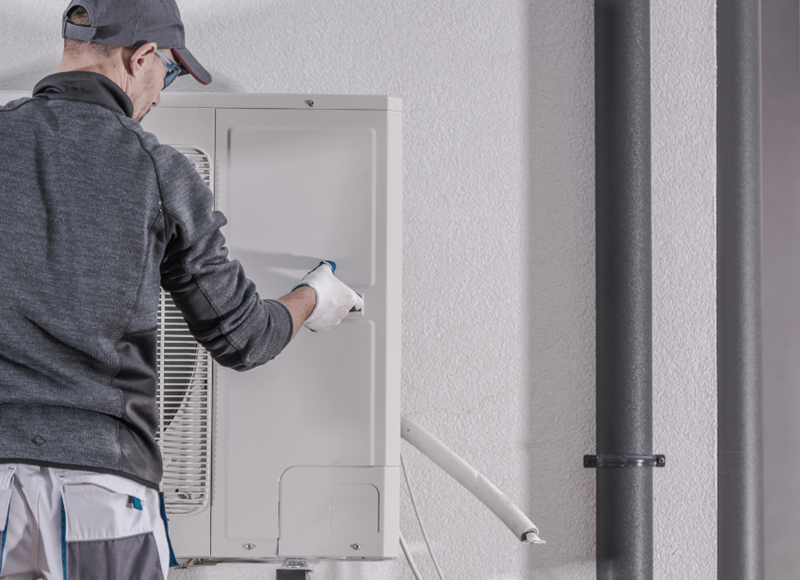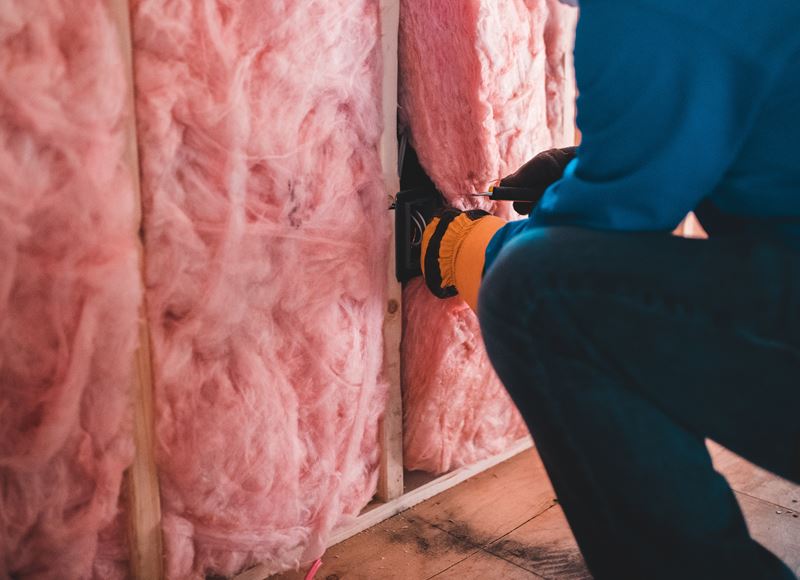Air source heat pumps

This is the least expensive and lowest carbon-intensive way to heat your home. Like a fridge in reverse, the heat pump draws outside air as low as -20°C into the system and converts this into heat for your home.
-
Save moneyWatch the video
This is the most cost-effective way to heat your home as you'll only pay for the electricity to run your system's compressor and circulating pump. The magic is that free heat is extracted from the outside air, even when it's below freezing.
-
300% Efficient
Unlike other heating systems, air source heat pumps emit three times as much heat as the energy that's put in, effectively meaning every £1 spent on electricity generates £3 worth of heat for your home.
-
Zero harmful emissionsWatch the video
Air source heat pumps generate no harmful emissions from a property, meaning the air both inside and outside of your home is cleaner. There’s also no risk of carbon monoxide poisoning, so you’ll be keeping your family safe too.
Run your air source heat pump on the dedicated Heat Pump Tariff.
And the 300% efficiency means you'll only be paying around ⅓ of the price of the Heat Pump tariff per kW of heat for your home.


Air source heat pump systems generally have an indoor buffer tank with circulating pumps and an outdoor condensing unit which are connected with water pipes . These units work together to extract heat from the outdoor air and convert this into comforting heat for your home.
As the refrigerant in the outdoor unit boils at such a low temperature, your air source heating system is able to use outdoor air as low as -20°C to produce the heat needed for your home.

Electric air source heat pumps are the best heating solution for new builds and properties that are well-insulated.
As is with more traditional heating, heat pumps generally aren’t designed to take a property from cold to warm as quickly as possible and heating an older, draughty property will impact its 300% efficiency.
If you are planning to retrospectively install an air source heat pump on a current building, please be aware that you may need larger radiators.
Don’t wait for your boiler to break midwinter to make the change.
Spring and Summer are the best time to make the switch. As with a house extension or roof replacement, it takes time but is worthwhile.

Power Supply
It’s really important to plan ahead and check if your property needs a supply line cable upgrade.
Electricity is delivered to your door through an underground network of cables. Some properties don’t have enough capacity in the existing service cable connecting the property to the electricity network, to supply a new heating system. These properties would need a supply line cable upgrade.
Your installer can check with Guernsey Electricity by submitting an additional load application if your property needs this upgrade.
Frequently asked questions
Making the switch to electric heating is a fantastic investment for your property. Like any property upgrade, the installation will take time to complete and we want to help answer your questions before you make the decision to change.
It works like a fridge in reverse.
Using heat from outdoor air as low as –20°C, the Air Source Heat Pump fan will draw this air into and over a heat exchanger that contains a refrigerant liquid.
An evaporator will then use latent heat in the air to heat this liquid sufficiently until it boils and creates a gas. It’s because this refrigerant liquid boils at such a low temperature that heat pumps can produce heat using very low air temperatures.
When this gas is compressed, it creates heat and an additional heat exchanger will then remove this heat from the refrigerant. Now in a liquid form, it can be used to heat the water needed for your heating system.
No - unless you're replacing an existing electric heating system. However, your preferred installer should always do their best to provide a solution in an emergency.
Switching to an electric system is a positive development for your property and similar to other property improvements such as extensions and roof renovations, it will take time to complete.
Lead times will vary depending on workload and availability, and it is worth preparing for your switch to electric heating well in advance. Please be aware that your property may need a supply line cable upgrade which will add to the timeframe.
We also recommend switching during the spring and summer months when possible so the work can be carried out when you do not need to use the heating. Depending on the work required, it may take several weeks from start to finish.
We recommend checking current prices and tariffs online first.
Use our online calculator to compare heating running costs
Heating systems only replace the volume of heat lost from your property, which means property insulation is the most effective way to reduce the running costs of any heating system.
Off-Peak Storage Heating
This heating system runs on the cheapest tariff available for electric heating as, like a battery, they're designed to store heat energy during your low-rate overnight periods. This cheaper stored heat can then be used during the day as and when you need it.
Please check our Super Economy 12 'Low-Rate' prices here. Your low-rate time bands are printed on the back of your electricity bill.
Electric Boilers and Underfloor Heating
These run on the Superheat Tariff.
Electric heating is costs significantly less to run than gas heating in Guernsey.
Oil is one of the cheapest commodities and although oil heating systems may initially have a lower running cost when new at around 91% efficiency, over time the cost to run your oil heating will increase as your boiler's efficiency decreases.
Some customers have replaced oil boilers working at less than 70% efficiency, meaning over 30% of their bill was used to pay for waste greenhouse gas emissions rather than valuable heat for their home.
Air Source Heat Pumps
This is the least expensive way to heat a property and runs on the Heat Pump tariff.
Unlike other heating systems, air source heat pumps provide three times as much energy as is put in. This means that for every £1 spent on electricity to run the heat pump, you could generate £3 worth of heat for your property.
If you’d like to make the switch to electric heating but are unsure about the upfront cost, you may be able to receive a preferential rate from lenders who offer "green lending".
Your best option would be to get in touch with your preferred lender and enquire about discounted loans based on purchasing an electric heating system as an alternative to gas or oil.
There will be a different answer to this question for each property depending on:
- the network infrastructure in your area
- the supply line cable connecting your property to the network, and;
- how much electricity other properties around you are using
Your neighbour may be in a different position to you if, for example, they had electric heating installed a few years ago, or the network serving their property is from a different substation.
Your installer will submit an Additional Load Form to Guernsey Electricity's new connections team to establish if there is enough power in the surrounding cable network to power an electric heating system in your property.
Replacing your gas or oil boiler whilst retaining your existing radiators is the quickest and most simple option. This is known as a ‘wet system’ as it relies on water heated by electricity to be pumped around the property.
Moving to electric radiators is known as a ‘dry’ system.
This doesn’t need a boiler and all existing radiators linked by pipework can be removed. Electric radiators are then installed throughout the home with a cable supplying each radiator to power it individually. This means each radiator is powered independently and has its own programmer and thermostat.
The main benefits of a dry electric heating system are:
- no water pumped around the property which reduces the risk of leaks.
- if one radiator fails, the others will still work unlike a wet system where if the boiler fails, there is no heat for the home.
- each room can have accurate temperature control e.g. your lounge can be warm and cosy at 21°C, and the spare room can be as low as 12°C just to keep it aired.
If the supply line cable supplying your property has sufficient capacity, you will not need an upgrade. However to find this out, your installer will need to submit an 'additional load' application.













